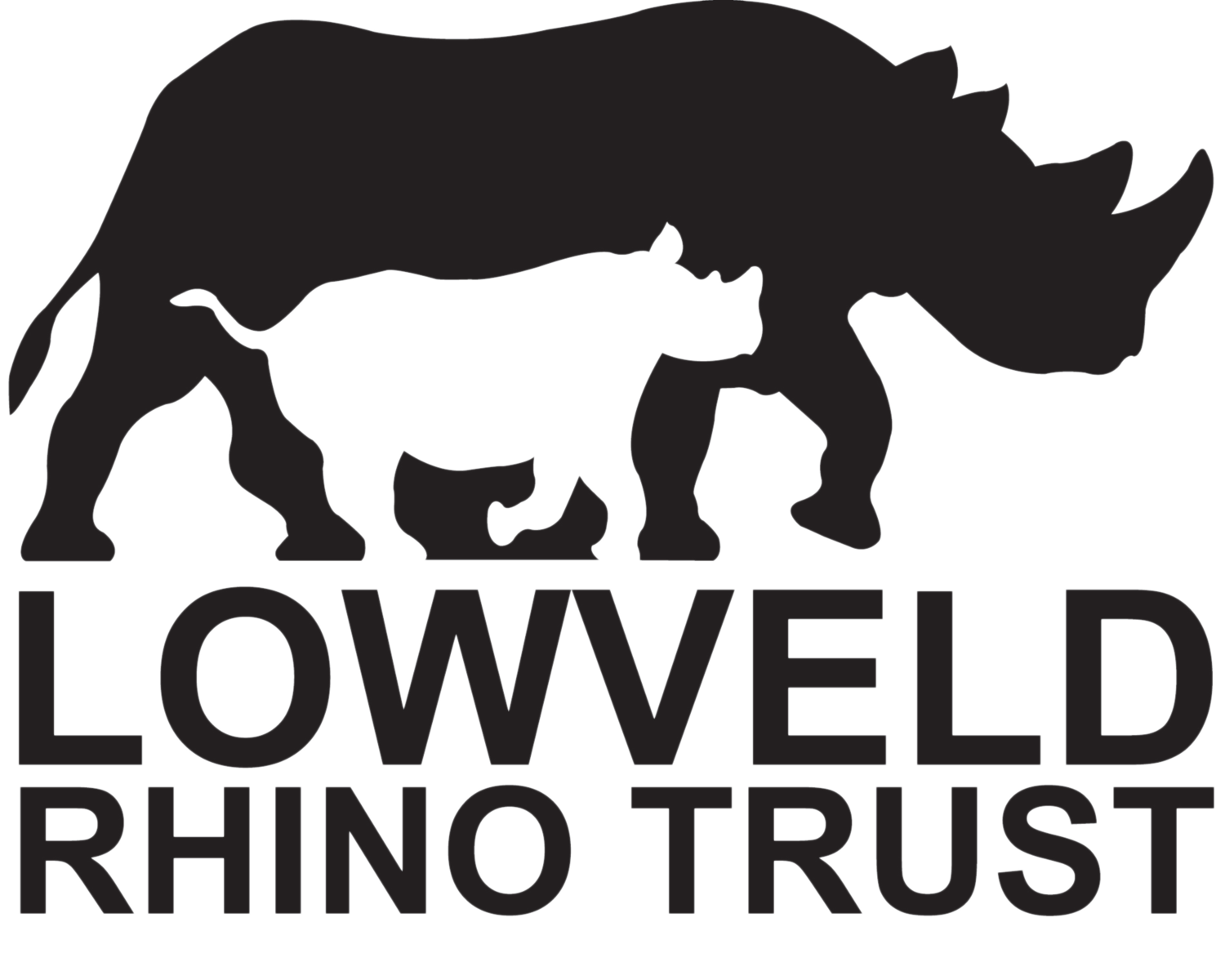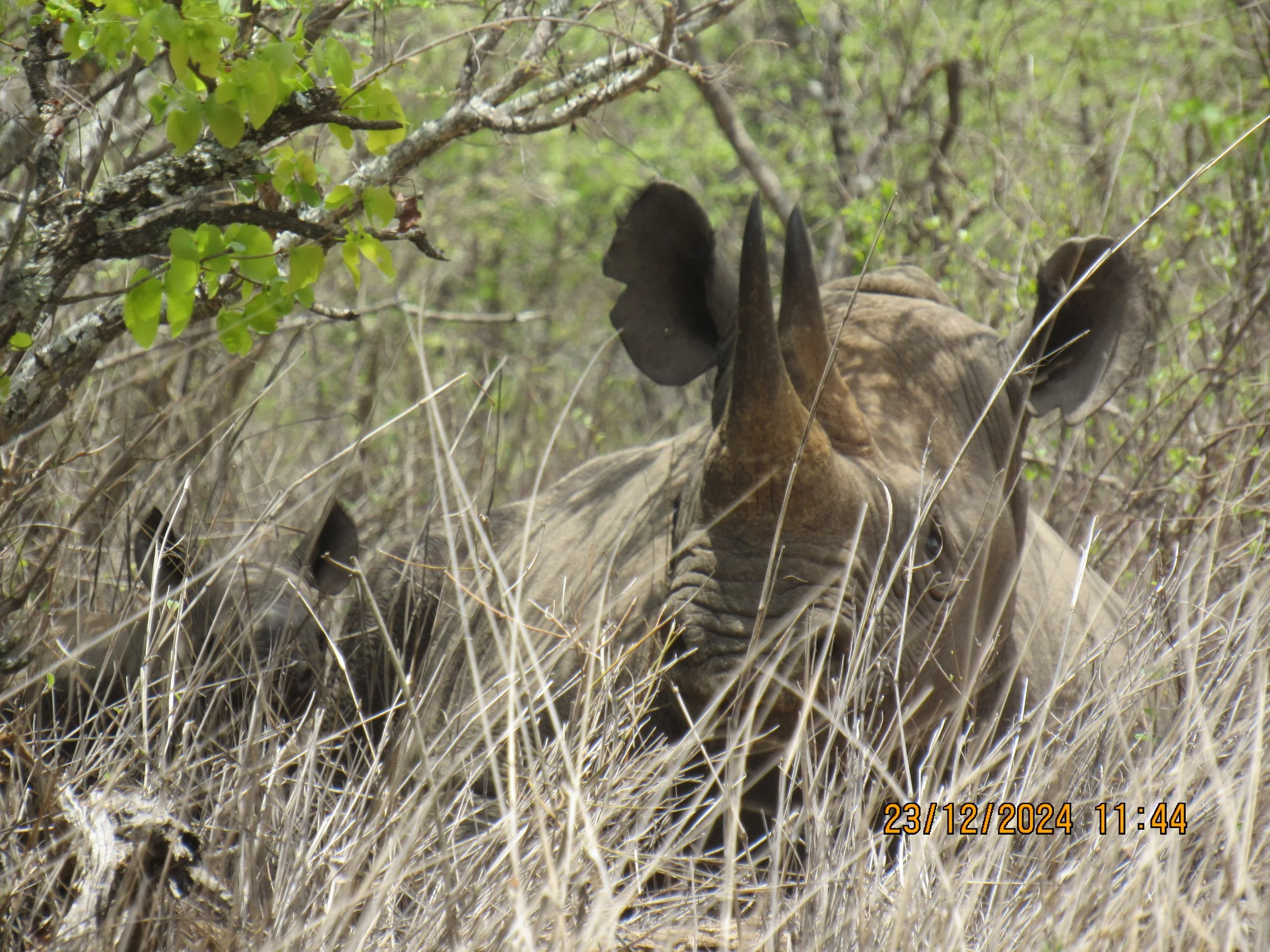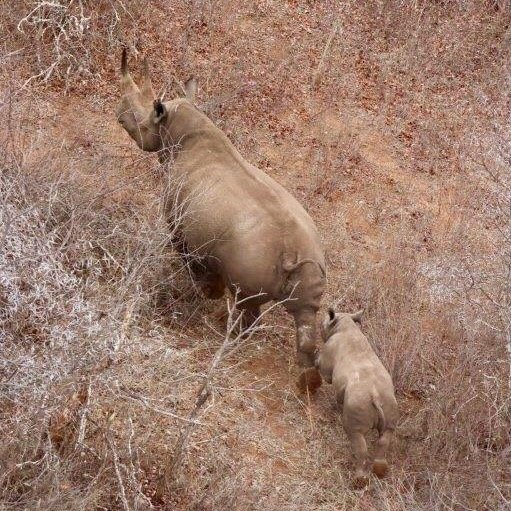
Rhino Stories
Rest In Peace Shrapnel
Born in Chete, Zambezi Valley in 1987, Shrapnel died at Bubye Valley Conservancy in the South East Lowveld in 2024 at the age of 37. His story was one of survival in the harshest conditions.
Shrapnel was one of the few survivors of the rhino poaching wave that hit the Zambezi Valley in the early 1990s. In 1992 he was captured in Chete Safari Area and translocated to the newly established Bubiana Conservancy in the South East Lowveld. He did not escape unscathed though. Up the left side of his body were bullet scars – likely from a poachers AK rifle. Hence his name – Shrapnel.
For nearly a decade Shrapnel lived and bred poaching free in the exceptional habitat of Bubiana Conservancy. A population started with 37 individuals which grew rapidly to 118 when Zimbabwe’s Fast Track Land Reform Program swept across the country, resulting in half the conservancy being converted from wildlife habitat into subsistence farming. With this settlement came significant snaring of wildlife and the situation became untenable for rhino conservation. Shrapnel, and 88 other Bubiana black rhinos had to be rescued once again from poaching pressure and were relocated into Bubye Valley Conservancy. Eighty-seven fell victim to the poachers snare or bullet before they could be saved.
Sadly the move to Bubye Valley Conservancy did not give these animals full reprieve from this renewed poaching pressure. In 2013 Shrapnel was found with a snare cutting into his back left leg. Fortunately the injury was caught early and with the snare cut out Shrapnel was able to continue living free. In 2019 Shrapnel again felt the poachers bullet – this time into the muscle high up on his rump. With no bone or organ damage or infection Shrapnel made a strong recovery in the field.
By 2022 though Shrapnel was up against his biggest challenge – age. At 35 years old, and no doubt the tax of having been shot twice and snared once, time was taking its toll and Shrapnel was being compressed into a smaller and smaller area by younger more powerful bulls. His home range had become so small there was no way he was going to be able to access enough food to sustain him through the dry season so the decision was made to move him into an area where the dominant bull had been poached. Free from competition Shrapnel took on a new lease of life and quickly located all the resident females.
Shrapnel loaded in the crate to take him to a new area away from other bulls
The 2024 dry season was particularly hot and long. Some days the thermometer registered over 50˚C and the rains were over a month late. A month too late for Shrapnel.
With his old teeth worn down by time and the bush so late to flush with new leaf – Shrapnel succumbed. His previously regular visits to the most popular water point ceased.
The rains arrived on the 18th December 2024. Too late for Shrapnel. But right on time for the birth of Mabuya’s new calf. Shrapnel’s son.
Lisa-Marie
Lowveld Rhino Trust has just completed its second rhino management operation for the year in Bubye Valley Conservancy. Besides the intended ear notching, dehorning and fitting of GPS tracking devices these operations provide agreat opportunity to give the population a little spot audit. Over 250 rhino sightings were achieved in the week-long operation. September offers excellent spotting conditions as very few trees have any leaves at this time of year. One particularly celebrated sighting was seeing now seventeen-year-old black rhino cow Lisa-Marie with a new calf, her seventh. Lisa-Marie had to be removed from the wild when she was only nine months old. Lisa Marie was born in the Chiredzi River Conservancy which suffered intense poaching pressure during the chaotic land reform period in the early 2000s. A copper wire snare, likely set to kill impala for meat, had tightened around Lisa-Marie's right hind leg. As the wire cut into her leg physically the copper started to react and chemically ate into her flesh - all the way to her tendons. The injury was so severe it was by no means certain that she would recover and it took months of dedicated and intense care for the wound to heal.
Lisa-Marie, and her bullet injured companion Carla, recovered to the point that they were considered well enough to be returned to a wild rhino population. They were moved to Bubye Valley Conservancy and released in late 2009 once they were big enough to not fall easy pretty to lions. It is truly rewarding to see an animal like Lisa-Marie, once so severely injured it was not known if she could possibly even recover, now breeding and healthy with the scar from what was a life threatening injury barely even noticeable on that right hind leg.
The snare entangled the young rhino and the damage went as far as her tendons
Lisa-Marie and her 7th calf, born in 2024
Lisa-Marie finally walks in the wild again after recovering from her injuries
This handsome rhino is called ‘Elvis’, and is Lisa Marie’s first calf
Updates from the Field
Siabuwa
Siabuwa joined us on the 26th September 1992. Raoul du Toit (Director of the Lowveld Rhino Trust) had been informed that there were reports of rhino spoor in the Siabuwa communal lands near Lake Kariba. In 1992 Zimbabwe’s black rhino population was thought to be as low as only 360 individuals after poaching decimated what had been, at over 1,700, Africa’s largest black rhino population in 1987. With funding support from the Beit Trust, Raoul assembled a small team and roped a friend into driving the Mercedes translocation truck and deployed along with support from Parks to find the rhino. It took two weeks to find and capture her. Two whole weeks for one little rhino. But what a rhino she turned out to be.
Siabuwa was translocated into the South East Lowveld of Zimbabwe, which at that time held just over 60 black rhinos. In the 31 years since, Siabuwa has produced ten calves, all females. These daughters have produced 28 calves of their own. Including the calves of these calves, Siabuwa’s family tree numbers 51 individuals.
In July 2023 Lowveld Rhino Trust rhino monitors were tracking Manjolo, Siabuwa’s five-year-old grandson. His spoor took them past a couple of well-used sleeping sites and then down into the dry river bed below, to the body of his grandmother, where she had died of old age at 39 years.
In her 31 years with us this little rhino made a massive contribution to rhino conservation. Sadly, like herself, not all members of her family are still with us. Poaching has taken over half, leaving us with 22 descendants today. Two of her daughters were moved to Gonarezhou National Park in 2021 to help establish a new black rhino population there. They were captured using the same Mercedes translocation truck that was used to capture their mother three decades prior.
It is thanks to individuals like Siabuwa that the South East Lowveld black rhino population has grown to over 600 today.
More Stories Below
More Stories Below

Twenty years of black rhino conservation in Bubye Valley Conservancy
Twenty black rhinos were translocated into Bubye Valley Conservancy in 2002. Prior to the 29th of August 2002, BVC held no black rhinos at all while neighbouring Bubiana Conservancy was home to over 100 of these Critically Endangered animals. At this time Bubiana was the largest black rhino population in Zimbabwe. Unplanned resettlement and clearing of land for subsistence farming was rapidly reducing the habitat available in Bubiana and snares set to capture antelope for meat were increasingly injuring and even killing the Specially Protect black rhinos. Urgent action needed to be taken to rescue the rhinos out of the worst affected areas and so translocation operations were undertaken to move them.
Over the following years the Lowveld Rhino Trust rescued an additional 100 plus black rhinos from various areas where it had become impossible to adequately secure them. Ten of these were calves orphaned by poaching which required significant effort by BVC to care for and rehabilitate before they could be returned to the wild. These orphans and translocated rhinos settled well into their new home and to date LRT, who undertake the rhino monitoring on BVC, have recorded over 340 black rhino births in the twenty years of this population. Sadly two hundred and forty mortalities have also been documented – the vast majority due to targeted rhino poaching which was at its worse in early 2019. Since then significantly increased investments in anti-poaching has brought the situation under control and the population is growing strongly once again. So strongly that this population was able to contribute fifteen black rhinos to help re-establish a population in Gonarezhou National Park in 2021.
Pumpkin & Rocky
Persuasion in the Lowveld
Chain
“He is not going to fit!”
Mabuya
Update 2021
Orphan Update 2020
Latest updates on the orphans
Donjiwe
The special Bond that saves her…
Inopa - Another Orphan
July 2018
LRT in the News
Media Updates
Rhino Partners
February 2016
2015 Poaching Update
Mabuya the Great
December 2018
Update on Orphans
September 2013

























